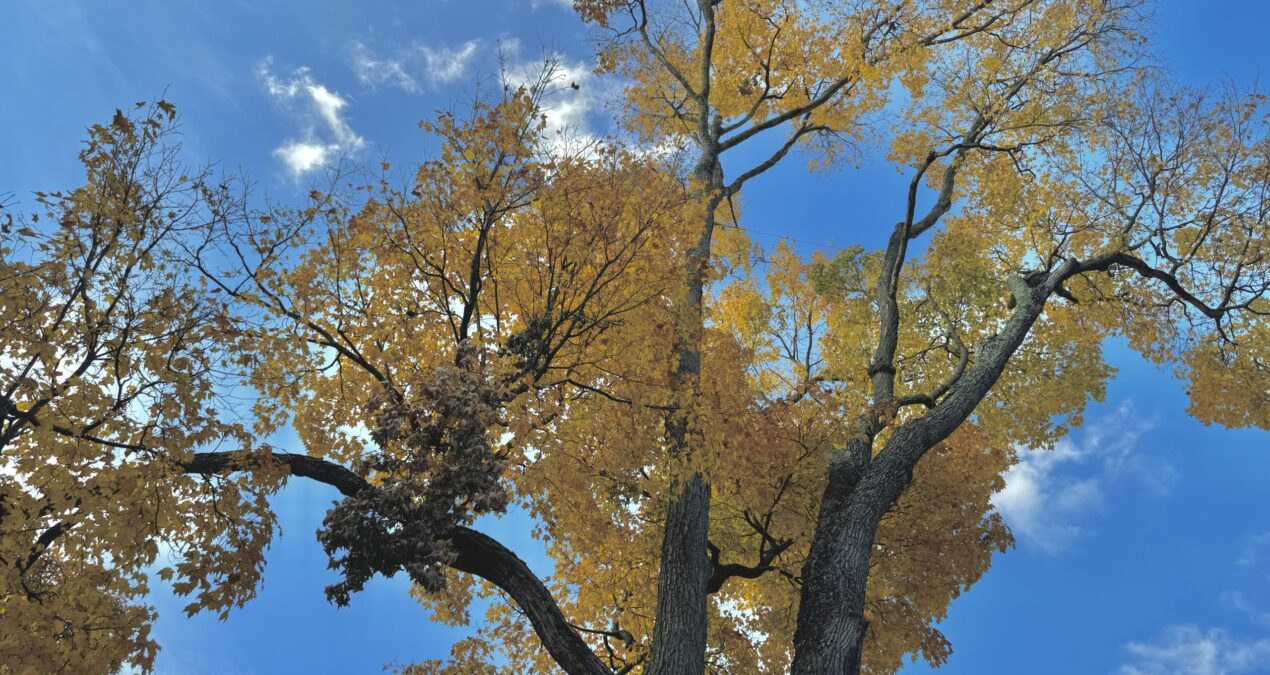Ella Kitchens, Asst. News Editor
Autumn on the hill is a blaze of red, orange, yellow, and brown. On Oct. 30, Jeremy King, director of sustainability and campus improvement, gave a Campus Arboretum Tree Tour. He not only showed the beauty of the trees on campus, but the thought process behind their selection.
On the tour, King explained that he is part of the Denison Tree & Landscape Advisory Committee.
“We’re responsible for picking the right trees and making sure they go in the right kinds of locations,” he said.
Denison has been recognized as an arboretum, because of the vast amount of trees it conserves. The university is also recognized as a Tree Campus USA by the Arbor Day Foundation because of the great level of attention paid to the “treescape.”
On the tour, King pointed out various trees and explained the difference between simple and compound leaves, and opposite and alternate branches. He showed how leaf scars can be used to determine whether a tree is opposite or alternate. Leaf scars are marks on the branches from where the leaves fall off every year.
King pointed out which trees were native species versus invasive species. He said that picking native species is key for ensuring the health of our ecosystem.
“In the past, we would plant trees, like, ‘oh, here’s a beautiful tree we want to have in this location.’ And whether it was native or not wasn’t something you heard about,” he said. “But when you bring a non-native species into an ecosystem, you don’t know what impact that’s going to have.”
King explained that a non-native tree, while it may look beautiful, could disrupt the ecosystem if it is not a food source or a habitat for other species in the ecosystem like a native species is. He stopped beside an oak tree on the tour to point out the multitude of ways this native species can be used.
“If you care about birds, butterflies, and moths, oak trees are the champions. There are tons of moth and butterfly species whose caterpillars eat oak leaves… And so birds will look under the oak leaves, they’ll find the caterpillars, they’ll catch them, they’ll fly to the nest, and they’ll feed them to their young,” said King. “You gotta have oak trees.”
On a larger scale, King said ecosystems are being impacted by invasive species, because people often do not realize the effect of planting them on the environment.
King stopped by a leaning maple tree to point out its split trunk. He said that sometimes, trees grow in ways that cause instability.
“The primary reason we would get rid of a tree is if it’s a risk to a building or a person,” said King. “In other words, this tree is unsafe, it’s unstable.”
With each tree that is cut down, the university wants to plant another in its place, but they also want to add new trees to campus apart from that.
“We’d like to plant 100 trees over the next 10 years,” said King.
To decide which trees to plant, the Denison Tree and Landscape Advisory Committee looks at what type of native trees will grow well in particular locations. They consider factors such as whether the trees need sun or shade, and moist or dry soil.
Another deciding factor is diversity.
“If we planted oak trees everywhere, that would be great because they support more caterpillars than any other tree,” said King. “But then what happens if you get a disease that affects all the oak trees? Then you might lose all your trees at once.”
King explained that the aesthetic qualities of trees are also a factor for selection. All of these qualities are combined to pick the best native trees possible for the campus.
“We would like to grow the arboretum by another 30 or 40 trees… Right now we’re focusing on identifying the different types of trees on campus,” said King. “But then maybe we’ll focus on expanding the arboretum to every tree.”
Photo: A maple tree outside of Doane-Administration on A-quad.

